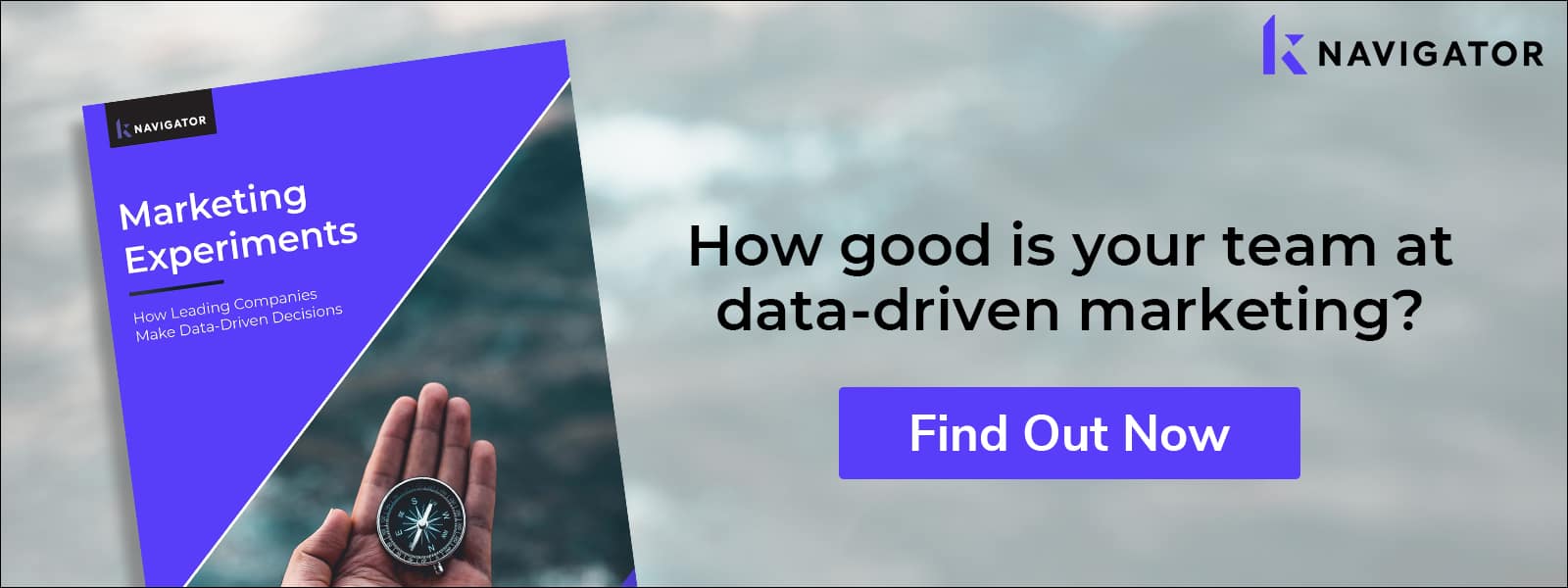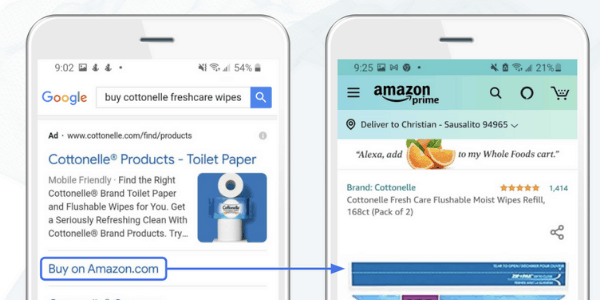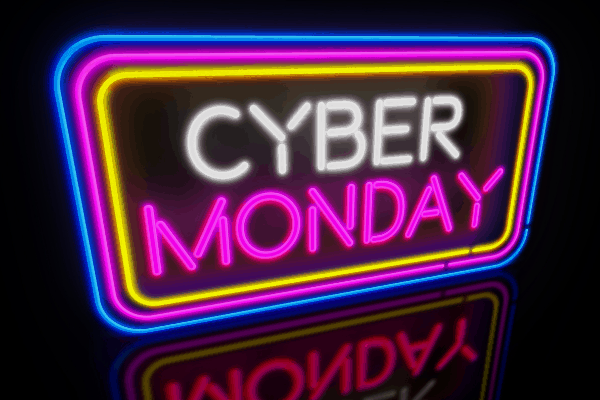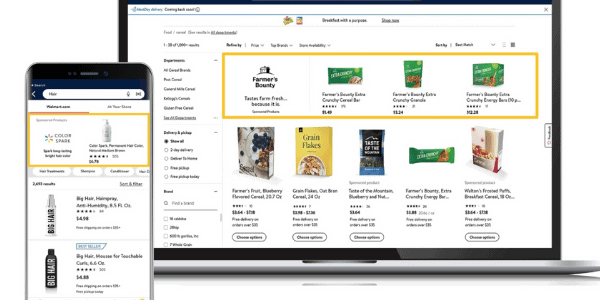Ad creative might be the most important component of brand messaging, but with so many new channels and formats, it can be hard to know what to do. Years ago, marketers just needed to master TV, print, radio, and billboards, but today’s marketers have a seemingly infinite number of choices to make. In today’s post, learn about the three key ingredients to a modern ad creative strategy.
The often-quoted adage goes that the average American sees anywhere from four to ten thousand ads a day. Unfortunately, many CMOs are sticking to the same old strategies that worked in the past, which means they could be missing out on opportunities to connect with their ad creative.
For a brand to win in today’s highly competitive and cluttered marketplace, it must have an ad strategy that works for the new realities of marketing.

The formula for a powerful ad creative strategy has three key ingredients:
Ad Creative Ingredient #1: Mastering the new era of marketing’s most important ad types
70% of US digital advertising budgets will go to Google, Facebook, Amazon this year and even more next year.
With more than two-thirds of digital ad spending to this trio, if you are going to pick one area to master, then start here. Each offers a handful of creative formats that can absolutely be mastered if you focus your attention on them.
First, get the entire team incredibly knowledgable about the ad formats that these three publishers offer. Then, review how various creative has performed on these platforms to build out your own set of best practices and ideas to test. Finally, execute with best practices in mind and start testing your assumptions. Over time, you build more great best practices so that your ad creative really starts to work.
But here’s where you should really focus: how using all three of these channels work together so you can build your ad creative strategy holistically versus in a vacuum.
Studies show that shoppers are using Amazon, Facebook, and Google in conjunction with one another before making purchase decisions. According to eMarketer, 42% of shoppers polled completed a purchase on Amazon after discovering a brand on Facebook. Additionally, buyers who use Google to compare prices might just head back to Amazon to make their final purchase. And now, both Facebook and Google allow advertisers to drive traffic to Amazon through their ads, so there’s no reason to keep campaigns siloed.
When it comes to putting together a winning ad creative strategy, what could be more important than figuring out how best these three channel’s ad types work to turn consumers into customers? Optimizing 70% of your digital media buys is a worthwhile goal.

Ad Creative Ingredient #2: Adapting with change and always be testing the next new format
The ways consumers are discovering brands is changing. However, many CMOs have spent so long perfecting their marketing strategies that there is a real, industry-wide fear of shaking things up. But those who stick with the status quo run a real chance of missing out on new customers. For brands that move to become early adopters of new ad formats, the payoff can be huge.
Take, for example, the runaway success of the true-crime podcast Serial a few years ago. Each week, millions tuned in to hear the latest twists in the case. Those listeners also heard an ad in each episode for email automation service MailChimp, which wisely sponsored the podcast. The ad was so novel, and so well done, it too became a runaway success, earning the brand thousands of new follows and mentions as well as national media attention from outlets like the Guardian and the Atlantic.
But that’s not to say every brand should go out and buy some podcast airtime (though it’s something to think about). MailChimp saw a platform, podcasting, that appealed to the audience it was targeting, which at the time was developers. And thanks to their innovation, the campaign ended up moving far beyond its original scope.
Thinking carefully about new places to discover core audiences, whether that be TikTok, Facebook Messenger, or even via voice assistant, is a smart way to get to know audiences in places where your brand isn’t surrounded by competitors also clamoring for attention.
Testing is a critical step because you will be able to build out your best practices in new channels. While your competitors are just getting started with “the latest thing” your team will already know what works and be able to beat those rivals to the punch.
Ad Creative Ingredient #3: Using the technology to go to the next level
It has become easier than ever before to deliver the right message to the right customer at the right time, but your team must use technology to do it. Just running with basic ads that every competitor can use as well isn’t enough to gain the edge.
However, by using great ads combined with new technological innovation, your ad creative strategy can be more impactful and more effective.
Here are three tech ideas for ad creative that you should be using:
Dynamic Creative works by taking the basic components brands include in their Facebook ads, such as images, titles, and videos, and uses machine learning to automatically generate optimized ad combinations based on that information. Variations of the ads are then served to targeted ad groups in order to explore the ad’s popularity across segments. Over time, data from these ads help brands to create even better content for each of its audiences.
Google Responsive Search ads also work to serve highly personalized content to target audiences. When creating their ads, businesses can write up to 15 different headlines and four different descriptions. From there, machine learning technology can test up to 43,680 different combinations of that input, optimizing for the most successful combinations. As test results roll in, Google Responsive Search ads will, over time, optimize the message most likely to resonate with searchers based on device, keyword used, browsing behavior, and other factors. While Responsive Search ads are still in beta, soon they will roll out for everyone. As with any new technology, early adopters will most likely be the ones who see the most benefit.
Creative Sequencing. Skai clients can use Creative Manager to group visual assets into Albums which can then be organized into a message sequence by simply dragging and dropping the assets into the desired order. For marketers, there are two ways to leverage this feature: for performance optimization and for storytelling.

Sequencing for performance optimization. Marketers can set performance goals on ad creative based on numerous metrics enabled by the system. Then, if an ad doesn’t meet those goals, the system will automatically pause it and create a new ad using the next image or video in the sequence. Clients can choose the desired threshold before the system checks the ad’s performance, such as after 100,000 impressions in order to give the ad enough time to prove itself.
Sequencing for storytelling. It doesn’t always make sense to run the same ads over and over to the same audiences. Marketers can activate narratives at scale by setting rules for when the images should be refreshed.
All of these innovations in the ways we create and deliver creative provide new opportunities for connecting with audiences. Being among the first to seize these opportunities could mean claiming the biggest share of that audience.
Is your ad creative strategy focused on the right things?
Skai’s suite of marketing technologies helps advertisers to drive performance, stay productive, and stay sharp with the campaign insights to enable data-driven decision-making.
Contact us today or set up a quick and easy demo.






